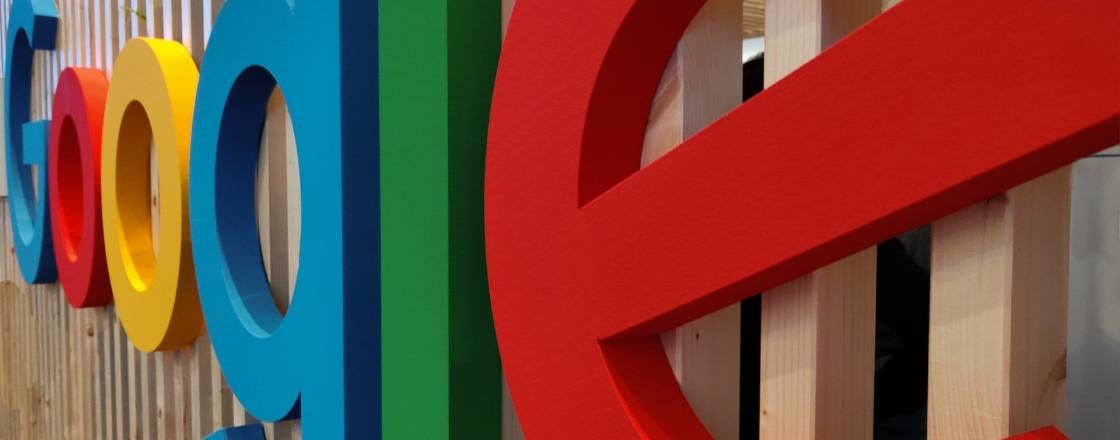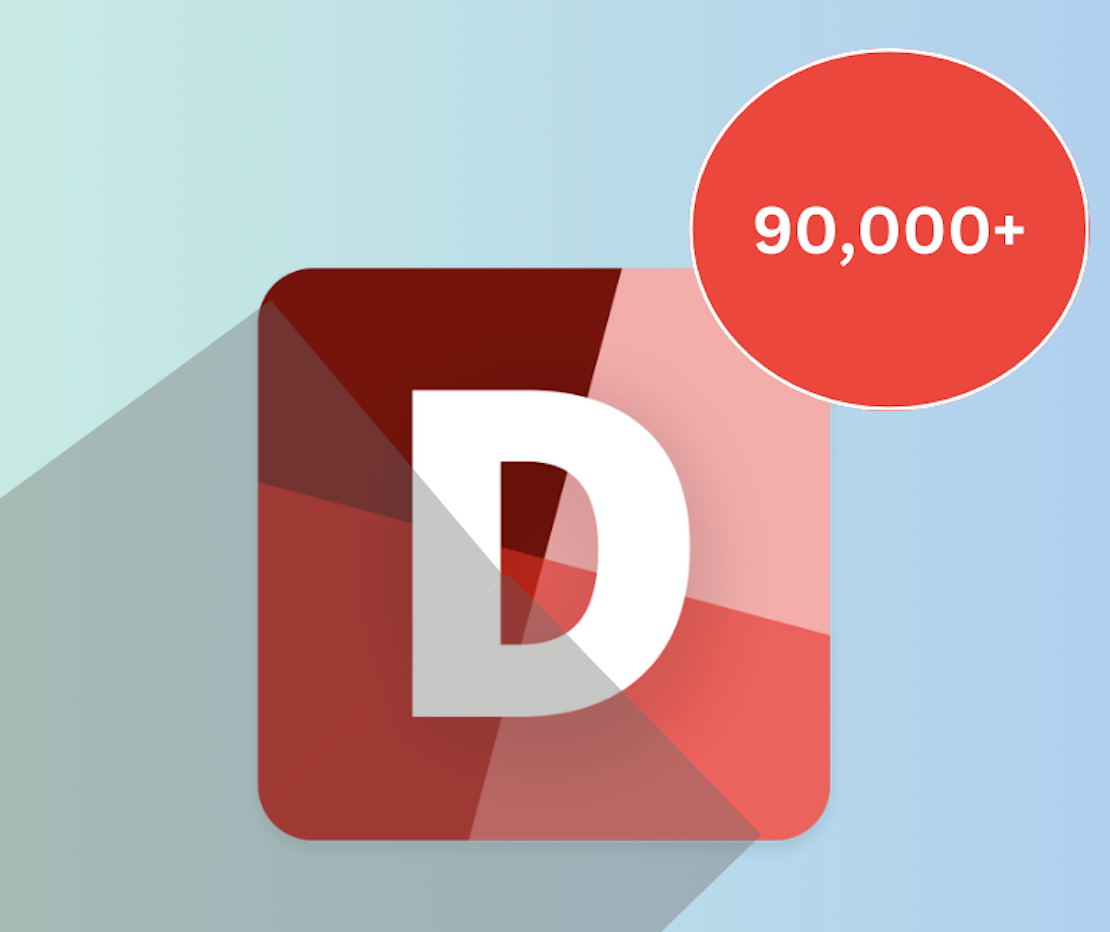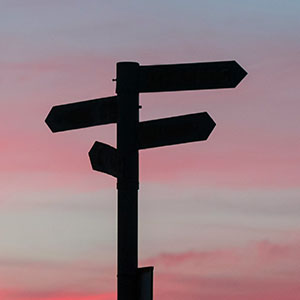COVID-19 Symptom Surveys through Google

Since April 2020, in addition to our massive daily survey advertised on Facebook, we’ve been running (even-more-massive) surveys through Google to track the spread of COVID-19 in the United States. At its peak, our Google survey was taken by over 1.2 million people in a single day, and over its first month in operation, averaged about 600,000 daily respondents. As usual, we make aggregated data from this survey available through our COVIDcast API.
In mid-May, we decided to pause daily dissemination of this survey in order to focus on our (longer, more complex) survey through Facebook, but we plan to bring back the Google survey this fall. The two surveys are, in fact, quite different and complement each other nicely. This short post covers some key differences between our Google and Facebook surveys, explains the backstory behind the “CLI-in-community” question as it arose through our collaboration with Google’s team, and shares some of our thinking about next steps for the Google survey.
Short Background
Back in March 2020, around the time we began discussions with Facebook about COVID-19 symptom surveys, we pitched the same idea to Google. Our motivation, as we explained in our last post, has been to produce real-time, county-level data streams of self-reported COVID symptoms that can potentially serve as early indicators of COVID activity in the US. As we noted in that post, we weren’t the only data scientists who thought of running COVID-19 symptom surveys, and several other groups had deployed surveys before us. What distinguished our strategy from others’ was the pursuit of a giant like Google to achieve widespread and continuous dissemination (well beyond what we could do ourselves). Google’s willingness to help was a huge win for us. Of all the partnerships we formed to create new COVID-19 indicators, our deal with Google was the first to come through. This gave us an invaluable confidence boost, and taught us the silver lining of this pandemic: that many people are truly generous and willing to help. Google’s contributions didn’t stop there—they have been helping us in various ways ever since.
Our initial survey with Google launched in late March, deployed through various websites and apps (with whom Google partners to run questionnaires). Each respondent opted-in to answering the survey and agreed to legal disclosures about how the data would be used. The survey asked just a single question:
Do you or anyone in your household have a fever of at least 100 °F, along with cough, shortness of breath, or difficulty breathing?
This pattern of symptoms defines a condition called COVID-like illness or CLI. A respondent could reply “Yes”, “No”, or “Prefer not to say”. We’re also given the respondent’s (inferred) county from IP address lookup. At the start, this survey data allowed us to estimate the daily % CLI, the percentage of people with COVID-like illness, in over 1,000 counties across the US. After about 2 weeks, we stopped the survey. Google wondered whether we could get equally useful information without asking a question of such a sensitive nature. In general, asking a person about their health (or their family’s health) is not common practice on Google’s survey platform. The hope was that asking a broader question might also improve response rates, reduce costs, and increase the number of potential respondents.
CLI-in-Community
Working with Brett Slatkin (head of Google Surveys) and Hal Varian (Google’s Chief Economist), we looked for a new question. Brett came up with a list of questions that were acceptable, and the most promising among them was:
Do you know of someone in your community who is sick with a fever, along with cough, shortness of breath, or difficulty breathing right now?
We decided to deploy this proxy question1 on April 11, 2020. We narrowed our focus to fewer counties: roughly the top 600 in terms of population, and estimated the daily % CLI-in-community, the percentage of people who know someone in their community with COVID-like illness. The initial results far exceeded our expectations, and were promising enough that within days we added this CLI-in-community question to our survey through Facebook.
To give you a feel for the data, below we plot the daily new COVID-19 cases per 100,000 people versus the estimated % CLI-in-community from our Google survey, at the state level, averaged over April 11 to mid-May. This is shown on the left, and on the right, we reproduce this with the estimated % CLI-in-community from our Facebook survey.
library(covidcast)
library(dplyr)
library(ggplot2)
library(gridExtra)
options(covidcast.auth = Sys.getenv("API_KEY")) # for more on API keys, see: https://cmu-delphi.github.io/delphi-epidata/api/api_keys.html
# Fetch county-level Google and Facebook % CLI-in-community signals, and JHU
# confirmed case incidence proportion
df_go = covidcast_signal("google-survey", "smoothed_cli", geo_type = "state")
start_day = min(df_go$time_value)
end_day = max(df_go$time_value)
df_fb = covidcast_signal("fb-survey", "smoothed_hh_cmnty_cli",
start_day, end_day, geo_type = "state")
df_in = covidcast_signal("jhu-csse", "confirmed_7dav_incidence_prop",
start_day, end_day, geo_type = "state")
# Join by state, average signals, compute correlations
df1 = inner_join(df_go %>% group_by(geo_value) %>% summarize(x = mean(value)),
df_in %>% group_by(geo_value) %>% summarize(y = mean(value)),
by = "geo_value")
df2 = inner_join(df_fb %>% group_by(geo_value) %>% summarize(x = mean(value)),
df_in %>% group_by(geo_value) %>% summarize(y = mean(value)),
by = "geo_value")
# Join again to get state populations
df1 = inner_join(df1, state_census %>% mutate(ABBR = tolower(ABBR)),
by = c("geo_value" = "ABBR"))
df2 = inner_join(df2, state_census %>% mutate(ABBR = tolower(ABBR)),
by = c("geo_value" = "ABBR"))
# Red, blue (similar to ggplot defaults), then yellow
ggplot_colors = c("#FC4E07", "#00AFBB", "#E7B800")
# Now make plots
subtitle = paste("Averaged over", start_day, "to", end_day)
p1 = ggplot(df1, aes(x = x, y = y, label = toupper(geo_value))) +
geom_smooth(method = "lm", col = ggplot_colors[2], se = FALSE) +
geom_point(aes(size = POPESTIMATE2019), color = ggplot_colors[2],
alpha = 0.5) +
scale_size(name = "Population", range = c(1, 10)) +
geom_text(alpha = 0.5) +
labs(x = "% CLI-in-community from Google surveys",
y = "Daily new confirmed COVID-19 cases per 100,000 people",
title = "COVID-19 case rates vs Google % CLI-in-community",
subtitle = subtitle) +
theme_bw() + theme(legend.position = "bottom")
p2 = ggplot(df2, aes(x = x, y = y, label = toupper(geo_value))) +
geom_smooth(method = "lm", col = ggplot_colors[1], se = FALSE) +
geom_point(aes(size = POPESTIMATE2019), color = ggplot_colors[1],
alpha = 0.5) +
scale_size(name = "Population", range = c(1, 10)) +
geom_text(alpha = 0.5) +
labs(x = "% CLI-in-community from Facebook surveys", y = "",
title = "COVID-19 case rates vs Facebook % CLI-in-community",
subtitle = subtitle) +
theme_bw() + theme(legend.position = "bottom")
grid.arrange(p1, p2, nrow = 1)In both plots, we see a reassuring trend, but the trend on the left is noticeably stronger. Indeed, the correlation here between the Google signal and case rates is 0.83, while that between the Facebook signal and case rates is 0.64. To be fair, we should note that the Google signal comprises a much larger number of survey samples (as we’ll emphasize next), and the Facebook signal’s correlations to case rates shot up in mid-June (as we saw last time and we’ll revisit, shortly).
From April 11 through May 14, we ran Google surveys in over 600 counties per day, with a target of at least 1,000 responses per county. The average number of responses per day was over 600,000, and at its peak, over 1.2 million! (By comparison, our survey through Facebook averages about 74,000 responses per day.) The actual sampling scheme behind our Google survey is more complicated, and involves two-level stratification, across both counties and states. For details, including those on statistical estimation, visit our COVIDcast signals documentation. On May 15, we paused our Google survey to focus on our Facebook survey, which is both longer and more complex. Importantly, the latter is not a replacement for the former, and our two surveys have different and complementary use cases.
Our Two Surveys
We discuss some similarities and differences between the Google and Facebook surveys. Starting with similarities, both have been deployed at a massive scale, reaching tens of thousands of people per day, and covering much of the US at the county level. To state the obvious, both ask the same question: whether a person knows someone in their community with COVID-like illness, and both lead to an estimate of % CLI-in-community.
Below we assess the numerical similarity of these estimates via correlations: we correlate them against each other, and for reference, correlate each against COVID-19 case rates. To be more specific, for each pair of the following: Google signal, Facebook signal, and COVID-19 case rates, and for each day that we have data available, we compute the Spearman correlation across all counties that had at least 200 cumulative COVID-19 cases by May 14 (the end of Google survey data). Over the first month of data, from mid-April to mid-May, we can see that the highest correlations clearly belong to those between the two survey signals. This is as expected, since in principle, these two surveys are measuring the same underlying quantity.2 The next largest correlations over the first month belong to those between the Google signal and case rates, which for the most part holds a substantial gap over the correlations between the Facebook signal and case rates. This is no doubt encouraging, especially because we’d hope that the Google correlations would have only improved later in the year (as did the Facebook correlations, which we previously suggested could have been due to the increase in the diversity of county-level case rates around mid-June).
# Fetch county-level Google and Facebook % CLI-in-community signals, and JHU
# confirmed case incidence proportion
df_go = covidcast_signal("google-survey", "smoothed_cli")
start_day = min(df_go$time_value)
end_day = "2020-09-01"
df_fb = covidcast_signal("fb-survey", "smoothed_hh_cmnty_cli",
start_day, end_day)
df_in = covidcast_signal("jhu-csse", "confirmed_7dav_incidence_prop",
start_day, end_day)
# Consider only counties with at least 200 cumulative cases by Google's end
case_num = 200
geo_values = covidcast_signal("jhu-csse", "confirmed_cumulative_num",
max(df_go$time_value), max(df_go$time_value)) %>%
filter(value >= case_num) %>% pull(geo_value)
df_go_act = df_go %>% filter(geo_value %in% geo_values)
df_fb_act = df_fb %>% filter(geo_value %in% geo_values)
df_in_act = df_in %>% filter(geo_value %in% geo_values)
# Compute correlations, per time, over all counties
df_cor1 = covidcast_cor(df_go_act, df_in_act, by = "time_value",
method = "spearman")
df_cor2 = covidcast_cor(df_fb_act, df_in_act, by = "time_value",
method = "spearman")
df_cor3 = covidcast_cor(df_go_act, df_fb_act, by = "time_value",
method = "spearman")
# Stack rowwise into one data frame, then plot time series
df_cor = rbind(df_cor1, df_cor2, df_cor3)
df_cor$what = c(rep("Google and case rates", nrow(df_cor1)),
rep("Facebook and case rates", nrow(df_cor2)),
rep("Google and Facebook", nrow(df_cor3)))
ggplot(df_cor, aes(x = time_value, y = value)) +
geom_line(aes(color = what)) +
scale_color_manual(values = ggplot_colors) +
labs(title = "Correlation between survey signals and case rates",
subtitle = sprintf("Over all counties with at least %i cumulative cases",
case_num),
x = "Date", y = "Correlation") +
theme_bw() + theme(legend.pos = "bottom", legend.title = element_blank())Now let’s consider the differences between the surveys. Here’s a summary:
Our Facebook survey is advertised by Facebook but run by us (on a CMU-licensed Qualtrics platform); this means that we receive all the individual survey responses directly (and Facebook never sees any of the data).
On the other hand, our Google survey is deployed directly by Google through partner websites and apps they use to run questionnaires; this means that we don’t see individual survey responses, but receive aggregated survey data from Google.
This makes a big difference as to how much (and what questions) we can ask on the survey: our Google survey is just a single question long, and our Facebook survey is much longer and more detailed, currently over 35 questions.
Finally, there’s a big difference in how much we control with respect to the geographic distribution of the survey samples: on our Facebook survey, we have no control over this, but on our Google survey we have full control, in that we can pick the counties we want to sample from ahead of time.
Google Survey Redux
As we can see from the above summary, the two survey schemes are complementary, and could be used synergistically. Our Facebook survey is a continuously-running, wide-reaching instrument that provides answers to a rich set of questions (beyond COVID-related symptoms, it asks about contacts, risk factors, behavior, and demographics). When we find something interesting that warrants follow-up and/or generalization to unseen locations, we could then deploy our Google survey in select counties—using it like a survey microscope (credit to Hal Varian for inventing the terminology!). This could be done automatically (it would be a pretty big, nonstationary multi-armed bandit problem) or manually (in collaboration with partners in public health and/or data journalists). Stay tuned to the Delphi blog for updates.
In the survey methodology literature, a “proxy question” is one in which the subject is asked to report on someone else. The traditional view seems to be that proxy questions can undermine survey data quality, but in our setting it’s critical: not only does it provide a safeguard against revealing personal health information, it turned out to deliver much higher correlations with case rates than the direct (non-proxy) question.↩︎
A closer look reveals that the relationship between the Google % CLI-in-community and Facebook % CLI-in-community signals is not 1:1. For example, you can check the x-axes in the first example in this blog post: the range of the Facebook signal is over twice that of the Google signal. There are differences in the setups we can point to: the two surveys phrase the CLI-in-community question slightly differently; they reach different subpopulations of the US; and the estimation procedures behind the surveys handle missing responses differently. But as far as we can tell, none of this can really explain why the Facebook numbers are over twice as large as the Google ones, a trend that seems pretty consistent across location and time. We’ll save rigorous analysis for when we work on deploying these two surveys in tandem; for now, we emphasize that this observation reiterates the importance of focusing on time-varying trends in the survey signals, not the signal values themselves (a point we made in our last post). Here, the self-reporting aspect must somehow be creating greatly different levels of bias in the two surveys; in an absolute sense, the subsequent estimates of % CLI-in-community strongly disagree, so both can’t be right, and this casts doubt on the idea that either could be bias-free.↩︎
Acknowledgements: Ryan Tibshirani wrote the initial code for producing estimates from the aggregated survey data. Sangwon Hyun, Natalia Lombardi de Oliveira, and Lester Mackey greatly extended and improved this codebase, and they developed, along with Ryan, the underlying statistical methodology. Ryan came up with the idea of running the surveys, and worked with Google to make this a reality. On the Google side, Brett Slatkin and Hal Varian have been key collaborators; Brett wrote the code to get daily survey data over to Delphi’s estimation pipeline; and both contributed numerous important ideas at various stages of the project.


